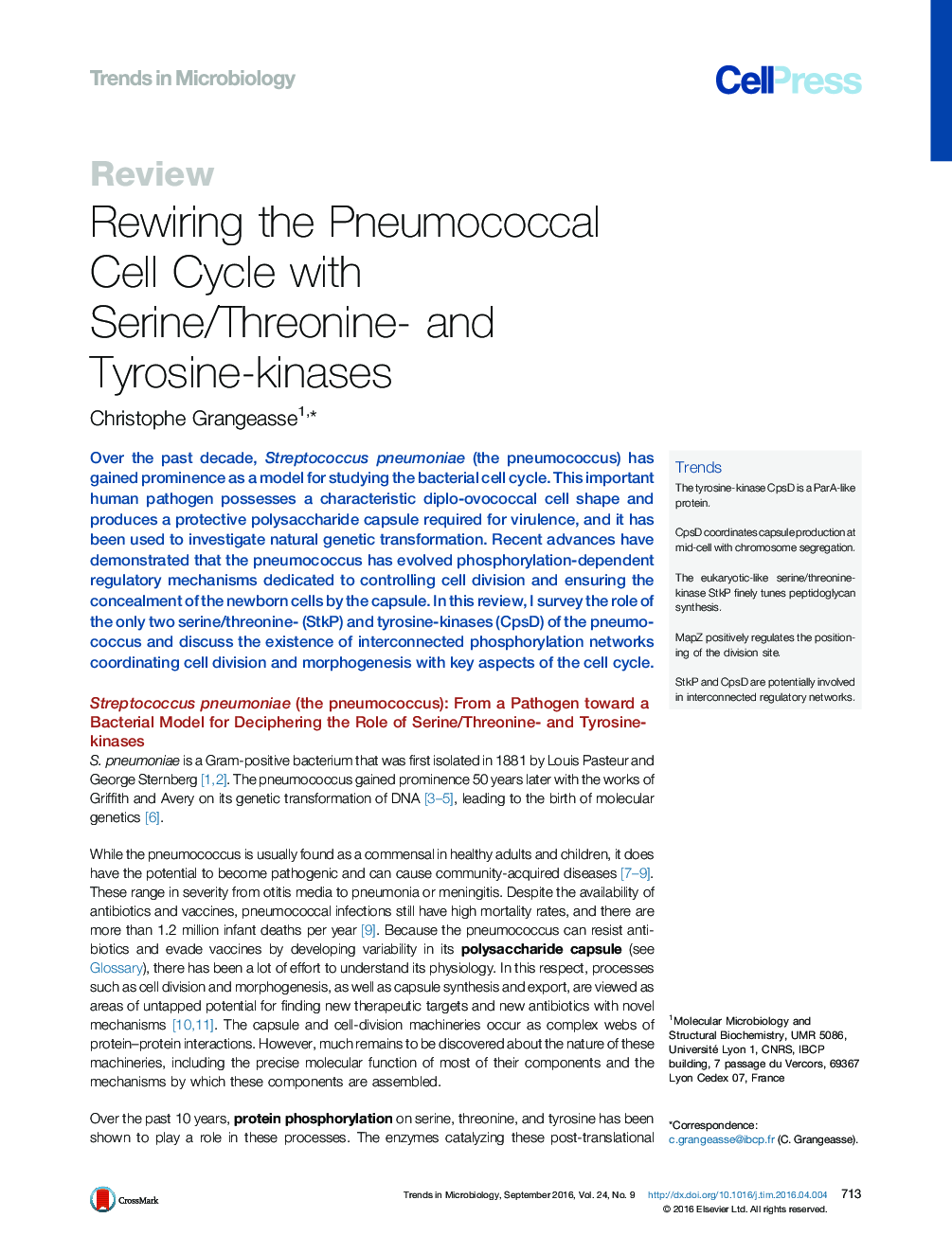| Article ID | Journal | Published Year | Pages | File Type |
|---|---|---|---|---|
| 3421693 | Trends in Microbiology | 2016 | 12 Pages |
Over the past decade, Streptococcus pneumoniae (the pneumococcus) has gained prominence as a model for studying the bacterial cell cycle. This important human pathogen possesses a characteristic diplo-ovococcal cell shape and produces a protective polysaccharide capsule required for virulence, and it has been used to investigate natural genetic transformation. Recent advances have demonstrated that the pneumococcus has evolved phosphorylation-dependent regulatory mechanisms dedicated to controlling cell division and ensuring the concealment of the newborn cells by the capsule. In this review, I survey the role of the only two serine/threonine- (StkP) and tyrosine-kinases (CpsD) of the pneumococcus and discuss the existence of interconnected phosphorylation networks coordinating cell division and morphogenesis with key aspects of the cell cycle.
TrendsThe tyrosine-kinase CpsD is a ParA-like protein.CpsD coordinates capsule production at mid-cell with chromosome segregation.The eukaryotic-like serine/threonine-kinase StkP finely tunes peptidoglycan synthesis.MapZ positively regulates the positioning of the division site.StkP and CpsD are potentially involved in interconnected regulatory networks.
